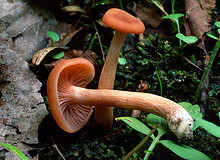DOE JGI Genomics of Energy and Environment Meeting coverage by GenomeWeb
Purdue University’s Jody Banks kicked off the scientific sessions at the US Department of Energy Joint Genome Institute’s 7th annual User Meeting in Walnut Creek, Calif., this week with her talk on the Selaginella genome and how sequencing diverse species could help researchers understand plant evolution. Read more at GenomeWeb [Read More]
